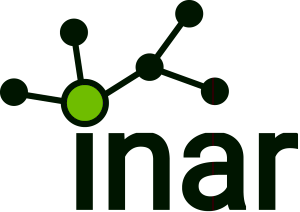Practically nothing works without electricity. However, electricity is also the most common cause of fire, ahead of forgotten cigarettes or botched welding jobs. Almost half of all flame retardants are therefore used for cables, electrical engineering, and electronics. Ceresana has investigated the global market for these chemicals, which prevent plastics and other flammable materials from igniting or at least slow down fires. A total of around 2.3 million tonnes of flame retardants are currently used every year: Phosphorus, aluminum (ATH), or antimony (ATO) compounds, brominated and chlorinated flame retardants, increasingly also bio-based additives.
Growing Demand for Flame Retardants in the Construction Industry
Large quantities of flame-retardant coatings and gelcoats are not only needed for vehicles, charging stations, batteries, and photovoltaic systems. Although the construction industry is weakening in many countries, Ceresana expects the highest growth in demand for flame retardants in this application area: The market analysts forecast that demand in the construction sector will increase by an average of 3.2% per year until 2033. With suitable flame-retardant additives, virtually all materials can be protected against fire and its consequences, including plastics, textiles, wood, or paper. Even if they only make up a small proportion of the total weight, integrated flame retardants or anti-flame coatings are absolutely essential for polystyrene foam boards (EPS, XPS) and other insulating materials, but also, for example, for the sheathing of steel beams in buildings, for PVC windows and doors, for acrylic glass, carpet yarns, and adhesives.
Fire Protection Should Be Safe, Efficient, and Environmentally Friendly
Increasingly, flame retardants are being customized for specific applications. Suitable bio-based flame retardants are being developed for bioplastics, for example from nanocellulose, lignin, soy proteins, or phytic acid. Aluminum trihydroxide (ATH), also known as aluminum hydroxide, is still by far the most frequently sold flame retardant worldwide, currently accounting for about 38% of the market. ATH is halogen-free and is considered relatively environmentally friendly. Other flame retardants, on the other hand, are increasingly being targeted by environmentalists and authorities because they release toxins, accumulate in living organisms, or can make the recycling of plastics more difficult. The EU Chemicals Agency ECHA, for example, is currently considering bans on all aromatic brominated and some organophosphorus flame retardants. Brominated flame retardants, which are used in particular for electrical products and foams, only account for 4.1% and 11.4% of the market in Western Europe and North America respectively, compared to 28.1% in Asia. Overall, most flame retardants are used in the Asia-Pacific region: This region of the world currently accounts for around 46% of total demand for flame retardants.
Current Edition of the Market Study “Flame Retardants – World”:
Chapter 1 provides a description and analysis of the global market for flame retardants – including forecasts up to 2033: For each region of the world, demand in tonnes and revenues in US dollars and euros are given. Furthermore, global and regional demand for flame retardants per product type and application area is analyzed. The following flame retardant types are examined individually: Aluminum trihydroxide (ATH), Brominated compounds, Chlorinated compounds, Organophosphorus, Antimony compounds (ATO), other flame retardants. Application areas for flame retardants analyzed in this study are: Construction materials, Electrical & electronics, Wires & cables, Transport industry and other applications
Chapter 2 contains a detailed analysis of the revenues generated with and the demand for flame retardants in the 16 countries with the largest national markets. Demand is broken down into individual applications and product types.
Chapter 3 provides useful company profiles of the largest manufacturers of flame retardants, clearly arranged according to contact details, revenues, net income, product range, production sites, and profile summary. Detailed profiles are supplied for 56 flame retardant producers such as Albemarle Corporation, BASF SE, Israel Chemicals Ltd. (ICL), Jiangsu Yoke Technology Co., Ltd., and Lanxess AG.
Further information on the new, already 8th edition of the market study “Flame Retardants – World Report”: https://ceresana.com/en/produkt/flame-retardants-market-report

About Ceresana
As one of the world’s leading market research institutes, Ceresana specializes in the chemicals, plastics, packaging, and industrial goods sectors. Special focus areas are bio-economy and automotive / mobility. Companies have been benefiting from our high-quality industry analyses and forecasts since 2002. More than 250 market studies provide more than 10,000 customers around the world with the knowledge base for their sustainable success.
More about Ceresana at www.ceresana.com
Ceresana
Mainaustrasse 34
78464 Konstanz
Germany
Press Contact: Martin Ebner, m.ebner@ceresana.com
